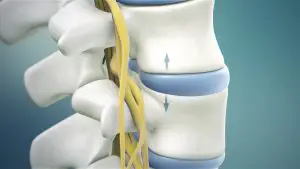Contents
Inversion Table Vs. Spinal Decompression
When it comes to spine decompression, there are two main methods: inversion table and spinal decompression therapy. Let’s take a look at the advantages and disadvantages of each to see which one might be best for you.
Inversion Table
Advantages:
- Inexpensive
- Can be done at home
- Easy to use
Disadvantages:
- Can be dangerous if not used properly
- May not be as effective as other methods
- Can cause headaches and nausea
Spinal Decompression Therapy
Advantages:
- Safe and effective
- Non-surgical option
- Relieves pain and pressure on the spine
- Helps promote healing by increasing blood flow and nutrients to the area
What is Spinal Decompression Therapy?
 Spinal decompression therapy is a type of lumbar traction that uses mechanical force to bring about significant changes in intradiscal pressure. Spinal decompression therapy has been hailed as an effective treatment method for certain conditions related to the spine and is commonly used to ease back pain caused by herniated or worn spinal discs.
Spinal decompression therapy is a type of lumbar traction that uses mechanical force to bring about significant changes in intradiscal pressure. Spinal decompression therapy has been hailed as an effective treatment method for certain conditions related to the spine and is commonly used to ease back pain caused by herniated or worn spinal discs.
The goal of spinal decompression therapy is to relieve pressure on the spine, which in turn can take pressure off of the spinal nerve roots and relieve pain. The execution of this therapy involves the use of a track table or similar device, which will gradually stretch and lengthen the spine. As the spine is stretched, there is a decrease in intradiscal pressure, which allows herniated discs to retract and relieves pressure on pinched nerves.
How Does Spinal Decompression Therapy Work?
Spinal decompression therapy is a non-surgical treatment that is used to relieve back and neck pain. The therapy involves the use of an adjustable traction unit that gradually applies gentle pressure to the spine. This pressure causes the spine to decompress, which reduces the pressure on the nerves.
The therapy is typically done in 30-minute sessions, and patients may need to undergo multiple sessions before seeing any relief. However, some patients may experience immediate relief after just one session.
There are many benefits of spinal decompression therapy, including:
- Reduced pressure on the spine
- Reduced pressure on the nerves
- Reduced inflammation
- Improved blood circulation
- Improved range of motion
What are Inversion Tables and How Do They Work?
An inversion table is a device that allows you to suspend yourself upside down or at an angle, with the goal of decompressing your spine. This process can provide relief from back pain and other conditions caused by pressure on the spine.
Inversion therapy has been used for centuries to treat back pain, and muscle spasms, and in recent years, inversion tables have become more popular as a way to do this. However, there is limited scientific evidence to support the claim that inversion tables are effective for treating back pain.
How Inversion Tables Work
Inversion tables work by using your own weight and gravity to decompress your spine. When you lie on an inversion table and flip yourself upside down, you take the pressure off your spine and disks. This can provide relief from conditions like herniated disks, scoliosis, degenerative disc disease, and pinched nerves.
Inversion tables are usually adjustable so you can control the angle of the incline. This allows you to start slowly and increase the incline as your comfort level increases. Some inversion tables also have straps that allow you to adjust the level of inverting while you are suspended.
Are Inversion Tables Safe?
Inversion tables are generally considered safe when used as directed. However, there are some risks associated with using inversion tables, such as:
- Headaches
- Dizziness
- Nausea
- High blood pressure
- Eye pressure
- Muscle strain
These side effects are usually mild and go away quickly. If you experience any ongoing discomfort while using an inversion table, stop using it and consult your doctor.
Why it May Not be a Good Idea to Use Inversion Tables
The inversion table is a popular device that is often promoted as a way to decompress the spine and relieve pain. However, there is little scientific evidence to support these claims, and in fact, inversion therapy may actually be harmful to some people.
Inversion therapy involves hanging upside down or at an inverted angle for short periods of time. This can be done using an inversion table, which is a type of table that is specially designed for inverting the body. People with degenerative disc disease, high blood pressure, glaucoma, heart disease, or pregnancy should not use inversion tables. In addition, people with herniated discs or other severe spine conditions should only use inversion tables under the supervision of a qualified healthcare professional.
There are many users of inversion tables who swear by their effectiveness, but there is no scientific evidence to support these claims. In addition, there are certain risks associated with using inversion tables, such as spinal cord injury, stroke, and nerve impingement. For these reasons, it is generally not recommended to use an inversion table unless you are under the supervision of a healthcare professional and have been cleared to do so by your doctor.
Which Option Should You Choose?
Inversion therapy is often used as a treatment for back pain. Spinal decompression is a type of inversion therapy that is also sometimes used to treat other medical conditions.
Spinal decompression therapy is a non-surgical treatment option that can be used to relieve back pain. The therapy involves stretching the spine, which can take the pressure off of the discs and nerves. This type of therapy can be done using a machine or an inversion table.
There are risks involved with any type of spinal decompression therapy, and many people do not respond well to the treatments. Treatment options should be discussed with a doctor before starting any type of therapy.
Normal activities can usually be resumed after a few sessions of decompression therapy. However, it is important to follow the doctor’s orders and not overdo them during the treatment process.
When to Choose Decompression
Inversion therapy is a therapy that uses the force of gravity to decompress the spine and relieve pressure on the discs and nerves. It is also sometimes called spinal decompression therapy.
Inversion therapy can be done with a special table or device, or by suspending yourself upside down from a bar or frame.
One theory is that inversion therapy works by taking pressure off the discs and nerves in your back. This is done by using the force of gravity to create a “vacuum effect” on the discs, which decreases the pressure on them.
It is also thought that inversion therapy may help to stretch out the muscles and ligaments in your back, which can help to relieve pain.
There is some anecdotal evidence that inversion therapy may be helpful for relieving back pain, but there is no scientific evidence to support this claim. There have been no reported or measured success rates for inversion therapy relieving back pain.
Some people believe that inversion therapy may be helpful for treating other conditions such as pinched nerves, disc pressure, or disc herniations. However, there is no scientific evidence to support these claims.
Frequently Asked Questions
What happens to your spine on an inversion table?
An inversion table is a table that you strap yourself into and then flip upside down. This decompresses your spine and can help relieve back pain.
Is an inversion table the same as decompression?
Inversion tables are a type of decompression device. Decompression devices are devices that are used to relieve pain in the back or neck by applying traction to the spine.
What do chiropractors say about inversion tables?
Chiropractors say that inversion tables are a great way to relieve back pain and improve your spine health.
inversion table, inversion therapy, inversion tables, spinal decompression, blood pressure, spinal decompression therapy, back pain, high blood pressure, decompression therapy, scientific evidence, short-term relief, spinal pain relief, extended period, few points, inversion therapy session, heart-related diseases.it, hard object, inversion table decompression therapy, certified professional, inversion tables, decompression therapy, affected disc/vertebrae, general treatment, entire spine, inversion tables, evasive decompression methods, upper body, several people, medical experts, pain relief, fitness levels, core support, chiropractic, sciatica, herniated disc, venous, the curvature of the spine, scoliosis, lower back, veins, chronic back pain, low back pain, labyrinthitis, Meniere's disease, surgical, disc herniations, chiropractic adjustments, lordosis, vertigo, poor posture, Paget's disease, posture

Dave Lee is the founder of Spine Institute NY, a huge fan of inversion therapy, a researcher, and an author.

